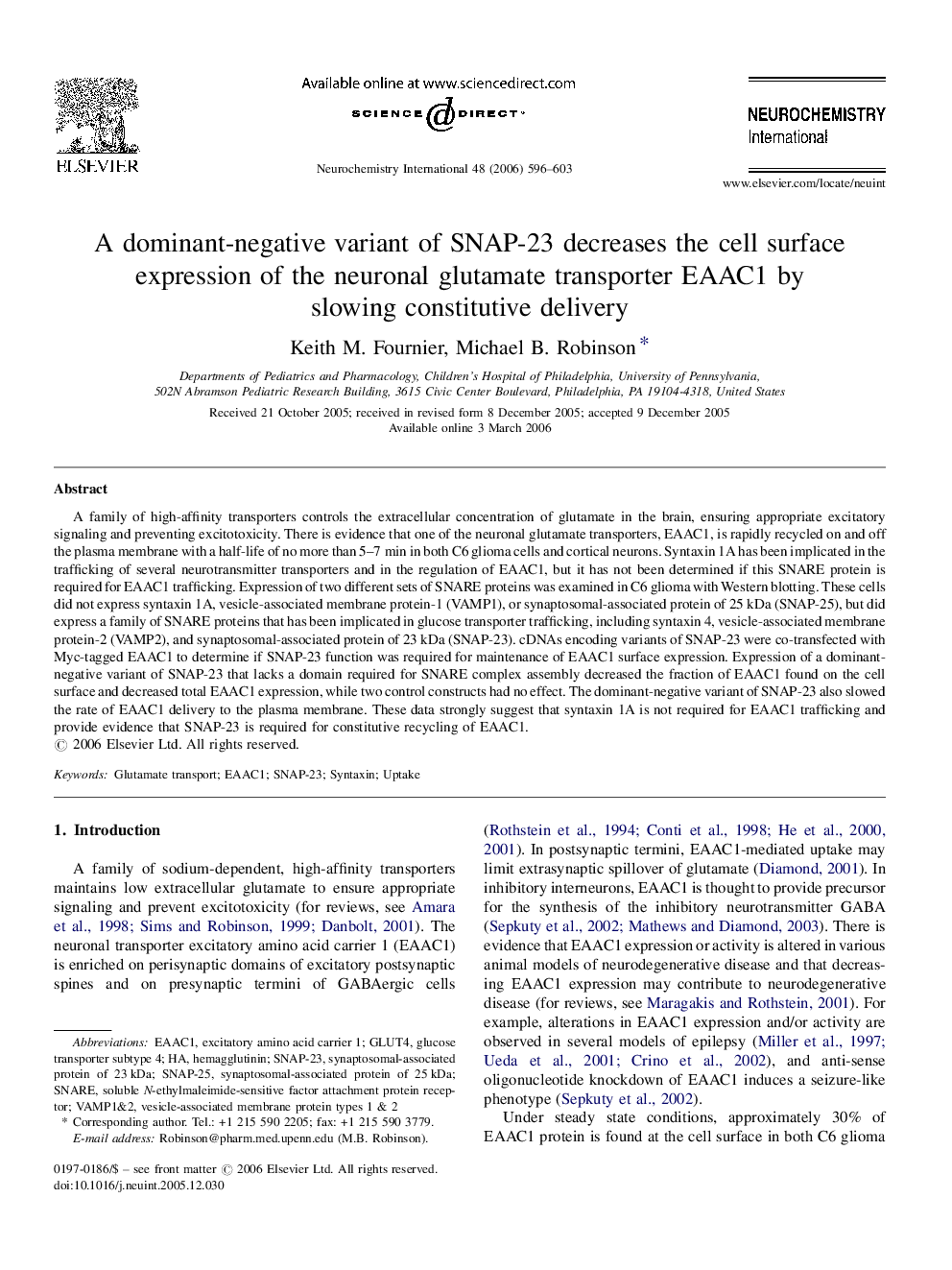| Article ID | Journal | Published Year | Pages | File Type |
|---|---|---|---|---|
| 2202210 | Neurochemistry International | 2006 | 8 Pages |
A family of high-affinity transporters controls the extracellular concentration of glutamate in the brain, ensuring appropriate excitatory signaling and preventing excitotoxicity. There is evidence that one of the neuronal glutamate transporters, EAAC1, is rapidly recycled on and off the plasma membrane with a half-life of no more than 5–7 min in both C6 glioma cells and cortical neurons. Syntaxin 1A has been implicated in the trafficking of several neurotransmitter transporters and in the regulation of EAAC1, but it has not been determined if this SNARE protein is required for EAAC1 trafficking. Expression of two different sets of SNARE proteins was examined in C6 glioma with Western blotting. These cells did not express syntaxin 1A, vesicle-associated membrane protein-1 (VAMP1), or synaptosomal-associated protein of 25 kDa (SNAP-25), but did express a family of SNARE proteins that has been implicated in glucose transporter trafficking, including syntaxin 4, vesicle-associated membrane protein-2 (VAMP2), and synaptosomal-associated protein of 23 kDa (SNAP-23). cDNAs encoding variants of SNAP-23 were co-transfected with Myc-tagged EAAC1 to determine if SNAP-23 function was required for maintenance of EAAC1 surface expression. Expression of a dominant-negative variant of SNAP-23 that lacks a domain required for SNARE complex assembly decreased the fraction of EAAC1 found on the cell surface and decreased total EAAC1 expression, while two control constructs had no effect. The dominant-negative variant of SNAP-23 also slowed the rate of EAAC1 delivery to the plasma membrane. These data strongly suggest that syntaxin 1A is not required for EAAC1 trafficking and provide evidence that SNAP-23 is required for constitutive recycling of EAAC1.
